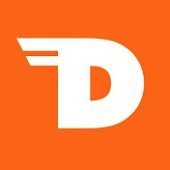-
Welcome to Auto Parts Forum
Whether you are a veteran automotive parts guru or just someone looking for some quick auto parts advice, register today and start a new topic in our forum. Registration is free and you can even sign up with social network platforms such as Facebook, X, and LinkedIn.
Online Ordering: Your Silent Staff
-
Similar Topics
-
By Counterman
or our commercial customers, price and quality are two of the most important considerations when purchasing parts from you (and your competitors). The third is availability, but at least we have some control over what gets stocked in our stores. Barring supply chain issues and material shortages, keeping the right mix of parts available is up to our buyers and inventory specialists. Unless your store’s pricing strategy is out of line with the competition, pricing (and quality) complaints fall squarely on the vendor/manufacturer.
This is not to say that if you are experiencing price, quality, or availability issues with a current vendor that you shouldn’t already be looking for alternate sourcing for the affected SKUs or product lines. During the latest UAW strike, GM and Stellantis parts warehouses were crippled by walkouts, leaving their dealer networks scrambling to provide parts for their customers. Many dealerships were forced to bolster their inventories with quality aftermarket-equivalent products just to keep work flowing through their service departments.
link hidden, please login to view For the aftermarket, this was a perfect storm of opportunity. There was less competition from the local dealership in terms of parts sales, and those same dealers were calling on aftermarket suppliers more often for parts they could not readily obtain through their OEM channels. Due to the perception that OE parts are the best option for their vehicle brand (and a need to provide the same level of service, warranty coverage, and quality) these requests were often for premium product lines. Dealerships are generally unwilling to risk their reputation by installing bargain-basement parts, and the expectation that dealership parts and service will carry a premium price tag silences many objections well ahead of the sale. Independent shops specializing in repair or resale of luxury and performance brands also enjoy a more quality-conscious clientele willing to pay a premium for their services.
There is, however, a subset of dealerships (and some general repair shops) for whom price trumps all other considerations. Your local “buy-here-pay-here” used car lot might come to mind, reconditioning and “flipping” (usually lower-end) auction vehicles, while offering very limited warranty terms. For this market, requests will usually gravitate toward the “least expensive” parts option. Even the most quality-conscious shops sometimes need to hit a “price-point” to stay competitive, and we all have that DIY customer who just wants “the cheapest thing that fits” because they are “trading it in soon” (even though they’ve been telling you that each time they’ve been in for the last three years!).
In an effort to accommodate all types of customer needs, we are likely to offer multiple lines for most of our “commodity” parts. Filters, brakes, chassis parts, belts, lighting, wipers, and fluids are some of the most common categories in which we offer diverse price and quality options. This isn’t necessarily an issue of price versus quality, but rather comparing the value realized from an item’s price and its quality. For maintenance items like filters, an installer might have a “menu” pricing schedule for oil changes, air and cabin filters, and wiper blades. These services generally include labor at no “additional” cost, and the parts already have a recommended service interval. Selling at a fixed price can be tricky when the costs are variable, so shops often use value-line parts for these services. If the shop advertises “any air filter $49.95 installed,” you can bet they will choose your $12 store brand filter over the $25 premium filter whenever they can! These parts will likely provide sufficient service life, and the cost savings to the shop offsets some of the lost labor revenue. On our side of the counter, oil is usually marketed as a loss leader priced to get customers through the front door. Shops treat oil changes the same way, as an opportunity to get the vehicle in the shop to upsell more profitable work.
We would never knowingly offer a product that doesn’t meet some sort of minimum quality standards, nor would we recommend a product that won’t meet a customer’s (reasonable) expectations. The use of “features and benefits” as a selling tool helps classify the customer’s needs, explains the differences in pricing and quality, and minimizes disappointment by customers who expected premium performance and extended service life from the bare-bones product they selected based on price alone.
The post
link hidden, please login to view appeared first on link hidden, please login to view.
link hidden, please login to view -
By Rade
Hello, does anyone know name of company who put that sticker on goods?
Via that company can order every part from OE for Vw Audi Skoda Seat Bmw Mercedes Porsche Land Rover and same..




Recommended Posts
Join the conversation
You can post now and register later. If you have an account, sign in now to post with your account.
Note: Your post will require moderator approval before it will be visible.